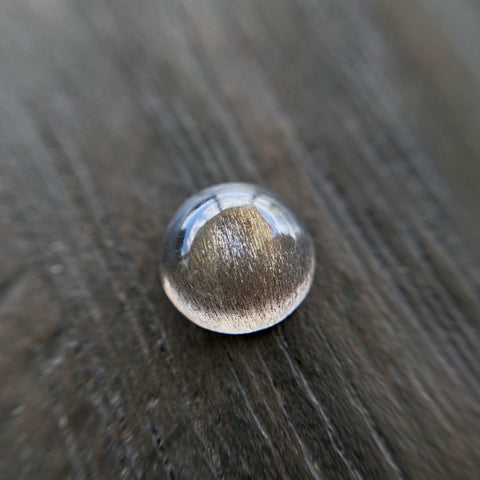MOONSTONE

The name "moonstone" is a trade name used to refer to this mineral, which is part of the feldspar group. Moonstone is actually a variety of adularia, sometimes also called Hectolite in reference to the Greek goddess Hecate, one of the 3 lunar goddesses in ancient Greece.
This mineral has many applications in jewelry due to its pearly color, its transparency that goes from translucent to glassy inclusions and its iridescent reflections. It is also known for presenting a phenomenon called luster or Schiller effect by which a reflection of white and blue light shines and seems to slide off the surface of these gems.
In Sanskrit the moonstone is called "Chandrakanta" which means "loved by the moon". Since ancient Egypt it is considered as a spiritual stone as it is seen as the gem of protection for night travelers.
The Greeks and Romans called it the "stone of the goddesses" and believed that it was solidified moonbeams that would change their appearance following the phases of the moon. According to the Romans, the image of Diana, the goddess of the hunt and the moon, could be seen on each moonstone.
A stone of divination and spirituality, it is said that men dressed as women in order to benefit from their powers of clairvoyance, since divination was a female art in ancient times.
Legend has it that Pope Leo X owned one whose color changed with the lunar phases, going from white to blue. Widely used during the emergence of Art Nouveau in decorative objects, it came to have the status of sacred stone in part due to the production of works of art such as those of the Maison Lalique.
The moonstone is closely linked to all aspects of femininity due to its direct association with Earth’s only natural satellite. On the one hand, it encourages the development of feminine intuition and positive feelings such as compassion, empathy and affection towards others.
On the other hand, it is considered beneficial since ancient times for female fertility by attracting comfort and protecting women during their pregnancy. Due to its effect on the thyroid, it influences hormonal balance and relieves menstrual pain and discomfort that may come with menopause.
Yin stone due to its color, it helps to open up before others and diffuses fear. It is also said that because it is a feminine stone it can counterbalance men with an excessively masculine temperament.
In addition to attracting good luck, it creates an environment of balance and harmony conducive to balance in love and affective relationships.
For couples, it allows the harmonization of feelings, facilitating reconciliation and taking important decisions. It is also said that it influences love itself as well as increasing sexual desire and carnal pleasure.
The main deposits of moonstones are found in India, Sri Lanka, Burma, Europe, Madagascar, Australia, Brazil and Tanzania. Some varieties of moonstones are the black moonstone, rainbow moonstone, cat's eye moonstone, and green moonstone.

